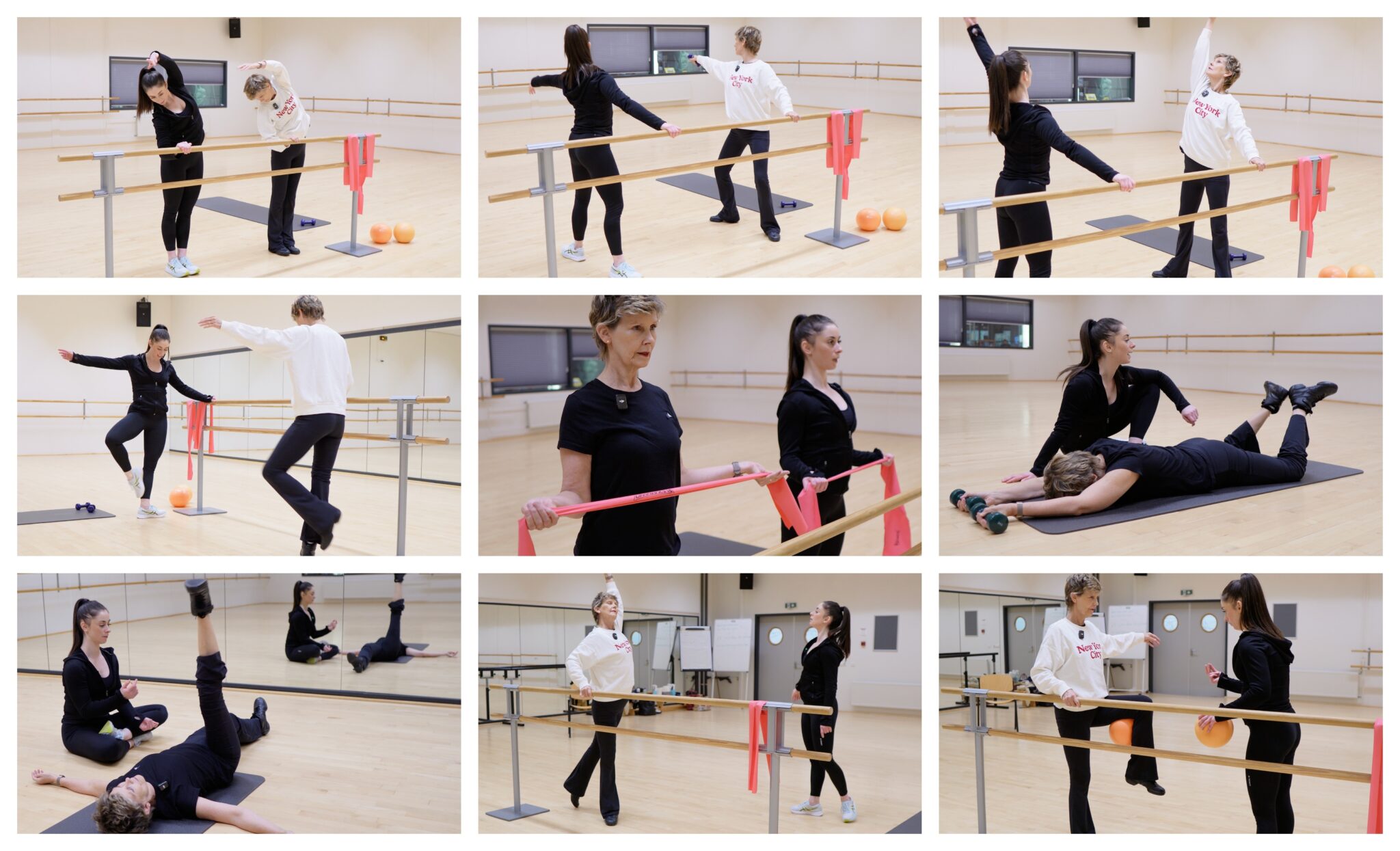(Powered by the Parkinson Performance Centre)
NeuroBallet is a groundbreaking method combining ballet, neuroscience and athletic conditioning. A special program of NeuroBallet is dedicated to people with Parkinson’s Disease (PD), and offers them a unique movement therapy. The NeuroBallet for PD program enhances balance, coordination, motor control, agility, cognitive performance, sensorimotor integration, and functional unilateral and bilateral training. Created by Gaia Forlani, a neuroscientist specialized in sensorimotor and movement neuroscience, a physical trainer, former professional ballerina, with also a MA in Philosophical Sciences. NeuroBallet is a core component of the Parkinson Power Protocol, designed to help individuals with Parkinson’s achieve optimal physical and mental performance, slow down PD progression and enhance symptoms. Dance therapy has been extensively studied for its benefits on motor and cognitive functions in Parkinson’s patients. Ballet, with its structured and rhythmic nature, provides an excellent medium to enhance balance, coordination, and motor control. Dance engages a complex network of brain processes, coordinating everything from body awareness to precise movement execution. Each step results from intricate neurological functions:
- Sensing the Body
- Transmitting and Integrating Sensory Information
- Motor Programming
- Executing Movement
In dance, these processes integrate in real time. The brain interprets rhythm, coordinates movement, and refines execution, transforming science into art. Ballet’s structured and rhythmic nature provides an ideal framework for enhancing motor control in Parkinson’s patients. Engaging in dance stimulates neuroplasticity—the brain’s ability to adapt by forming and reorganizing synaptic connections—fostering both motor learning and cognitive improvement. This process is driven by the complexity of ballet’s movement patterns, the precision of repetition, and the influence of music, all of which reinforce brain adaptation and enhance neuromuscular coordination. Through consistent practice, ballet not only refines motor skills but also strengthens the brain’s capacity to learn, adjust, and sustain movement, making it a powerful tool for neurorehabilitation.
- Balance & Coordination & Stability
- Fine Motor Skills
- Multiple Sensory Processing and Integration
- Cognition & Memory & Motor Learning
- Motor Control, Learning & Adaptation
- Emotion & Self-Expression
Barre exercises form the foundation of NeuroBallet, enabling unilateral training before progressing to centre and diagonal work. Since Parkinson’s often affects one side of the body more than the other, barre work isolates and strengthens each side separately, preparing both for more complex movement integration in the centre and diagonal exercises that promote bilateral coordination, spatial awareness, and full-body strength. This progression enhances movement efficiency, adaptability, and confidence in daily activities. Further, music plays a crucial role in NeuroBallet by providing rhythmic auditory stimulation, which has been proven to:
- Improve gait and reduce falls
- Enhance coordination and cognitive function
- Synchronize movement with external rhythm
- Boost mood and motivation
By leveraging music’s impact on the motor and limbic systems, NeuroBallet transforms movement therapy into an engaging, effective experience.
As the CEO and founder of the Parkinson Performance Centre and creator of the Parkinson Power Protocol, Gaia is dedicated to helping individuals with Parkinson’s Disease reach their highest physical and cognitive potential. NeuroBallet is a core component of this program, integrating ballet, neuroplasticity, and performance movement to empower individuals to overcome challenges, slow down PD progression, and enhance symptoms.
Further, the Parkinson Performance Centre collaborates with the creative platform Phil.Art, also founded by Gaia Forlani. Phil.Art is a pioneering platform that merges art, neuroscience, and philosophy to explore movement disorders. Through performances, interactive workshops, and museum and art interventions, Phil.Art investigates how art, philosophy, dance and choreography can serve as diagnostic and therapeutic tools. This initiative fosters collaboration between patients, scientists, and artists to push the boundaries of traditional medicine. By integrating art into neurology, Phil.Art reveals dimensions of movement and cognition that science alone cannot capture, redefining the role of art and creativity in health and healing.
For more information on how NeuroBallet and the Parkinson Power Protocol can transform your journey with Parkinson’s, connect with Gaia Forlani on Instagram (@gaia.forlani.ppc) or visit the website parkinsonperformancecentre.com.
Gaia Forlani, MA, MSc.
CEO & Founder | Parkinson Performance Centre | NeuroBallet | Phil.Art
Image featuring:
Sabine Woertman-Bode, @sabinewoertman_ (Instagram)
Gaia Forlani, @gaia.forlani.ppc (Instagram)

